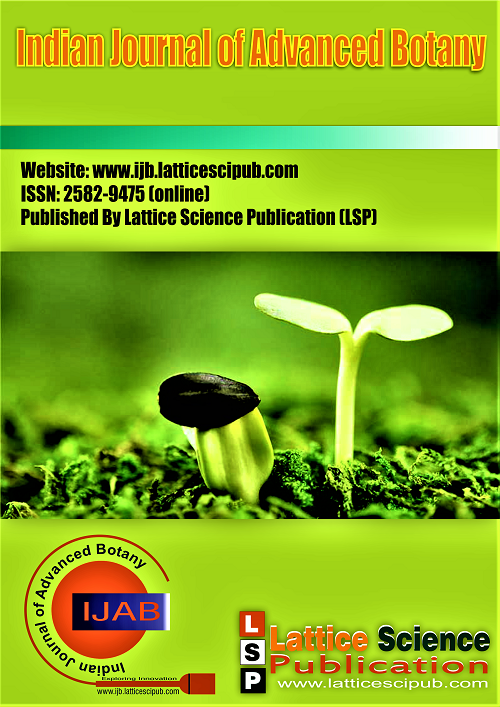Chemical Analysis of Water Hyacinth Ash by XRD and SEM
Main Article Content
Abstract
The specific term for the Water hyacinth plant is Eichhorniacrassipes. The water plant that flows freely, rising at still or slower water sources. Water Hyacinth develops massive biomass and doubles its population in two weeks by fast-growing. These entail a loss of biodiversity, water pollution, water loss, agriculture, infrastructure damage and negatively effect on public safety, and water species. The objective of the study is to evaluate the chemical composition of water hyacinth ash by XRD and SEM .XRD is an obligatory method for analysing the characteristics and composition of materials. It is a non-destructive method to analyse all types of material substances like powder, crystals, and fluids. Nowadays X-ray diffraction Techniques are utilized in assorted fields like research, development, and production of materials. The particle size, shapes, surface roughness, and fracture are defined using aEDAX. When a sample is placed on the beam and multiple signals determine the interactions with the samples. Acetone is used to stop the hydration reactions. Then the specimen is dried and made to conduct. Finally, a micrograph was recorded using SEM.
Downloads
Article Details

This work is licensed under a Creative Commons Attribution-NonCommercial-NoDerivatives 4.0 International License.
How to Cite
References
Sukarni, Sudjito, Hamidi N, Yanuhar U and Wardana I N G 2014 Potential and properties of marine microalgae Nannochloropsisoculata as biomass fuel feedstock International Journal of Energy and Environmental Engineering 5 279–90
Sukarni S, Sumarli S, Nauri I M, Purnami P, Al Mufid A and Yanuhar U 2018 Exploring the prospect of marine microalgae Isochrysisgalbana as sustainable solid biofuel feedstock Journal of Applied Research and Technology 16 53–66
Rezania S, Din M F M, Taib S M, Dahalan F A, Songip A R, Singh L and Kamyab H 2016 The efficient role of aquatic plant (water hyacinth) in treating domestic wastewater in continuous system International Journal of Phytoremediation 18 679–85
Liputan6.com 2017 Cara SidoMuncul Manfaatkan Eceng Gondok BuatSumber Energi - Bisnis Liputan6. com
Indonesiabertanam.com 2016 Rencana Program 2016 : pengolahan Enceng Gondok Menjadi NilaiEkonomis – INDONESIA BERTANAM
Tempo.co2016 Eceng Gondok di Waduk Selorejo Terus Meluas - Nasional Tempo.co
Tempo.co2015 Eceng Gondok Ancam PopulasiIkan di Sungai Citarum - Nasional Tempo.co [11]
Sukarni, Sumarli, Puspitasari P, Suryanto H and Wati R F 2017 Physicochemical characteristics of various inorganic combustible solid waste (ICSW) mixed as sustainable solid fuel AIP Conference Proceedings vol 1887 p 020066
Huang L, Xie C, Liu J, Zhang X, Chang K L, Kuo J, Sun J, Xie W, Zheng L, Sun S, Buyukada M and Evrendilek F 2018 Influence of catalysts on co-combustion of sewage sludge and water hyacinth blends as determined by TG-MS analysis Bioresource Technology 247 217–25
Sukarni S 2016 Exploring the potential of municipal solid waste (MSW) as solid fuel for energy
Pattra, S., Sittijunda, S., 2015. Optimization of factors affecting acid hydrolysis of water hyacinth stem (Eichhorniacrassipes) for bio-hydrogen production. Energy Procedia 79, 833 –837.





